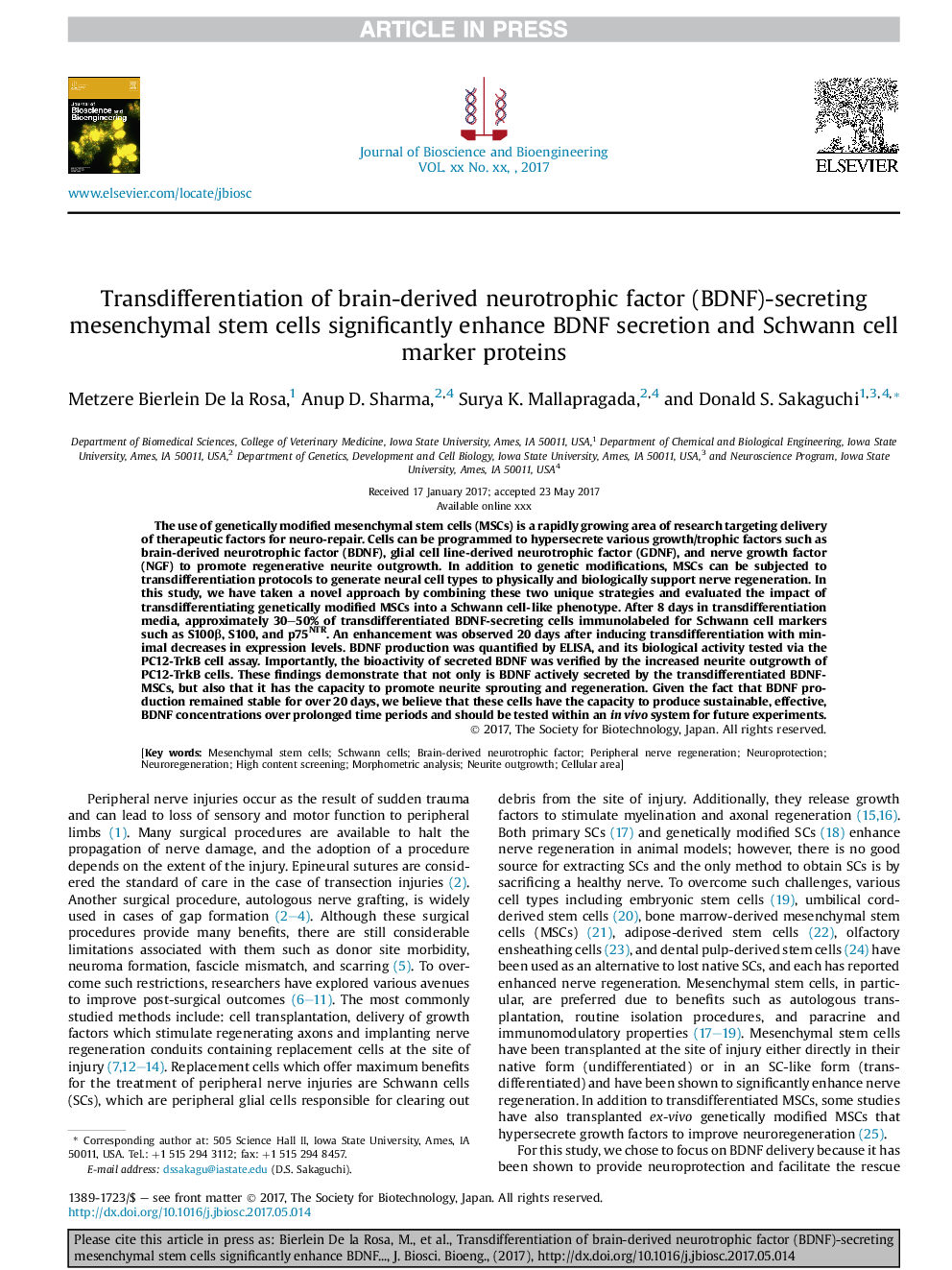| Article ID | Journal | Published Year | Pages | File Type |
|---|---|---|---|---|
| 4753215 | Journal of Bioscience and Bioengineering | 2017 | 11 Pages |
Abstract
The use of genetically modified mesenchymal stem cells (MSCs) is a rapidly growing area of research targeting delivery of therapeutic factors for neuro-repair. Cells can be programmed to hypersecrete various growth/trophic factors such as brain-derived neurotrophic factor (BDNF), glial cell line-derived neurotrophic factor (GDNF), and nerve growth factor (NGF) to promote regenerative neurite outgrowth. In addition to genetic modifications, MSCs can be subjected to transdifferentiation protocols to generate neural cell types to physically and biologically support nerve regeneration. In this study, we have taken a novel approach by combining these two unique strategies and evaluated the impact of transdifferentiating genetically modified MSCs into a Schwann cell-like phenotype. After 8 days in transdifferentiation media, approximately 30-50% of transdifferentiated BDNF-secreting cells immunolabeled for Schwann cell markers such as S100β, S100, and p75NTR. An enhancement was observed 20 days after inducing transdifferentiation with minimal decreases in expression levels. BDNF production was quantified by ELISA, and its biological activity tested via the PC12-TrkB cell assay. Importantly, the bioactivity of secreted BDNF was verified by the increased neurite outgrowth of PC12-TrkB cells. These findings demonstrate that not only is BDNF actively secreted by the transdifferentiated BDNF-MSCs, but also that it has the capacity to promote neurite sprouting and regeneration. Given the fact that BDNF production remained stable for over 20 days, we believe that these cells have the capacity to produce sustainable, effective, BDNF concentrations over prolonged time periods and should be tested within an in vivo system for future experiments.
Keywords
Related Topics
Physical Sciences and Engineering
Chemical Engineering
Bioengineering
Authors
Metzere Bierlein De la Rosa, Anup D. Sharma, Surya K. Mallapragada, Donald S. Sakaguchi,
